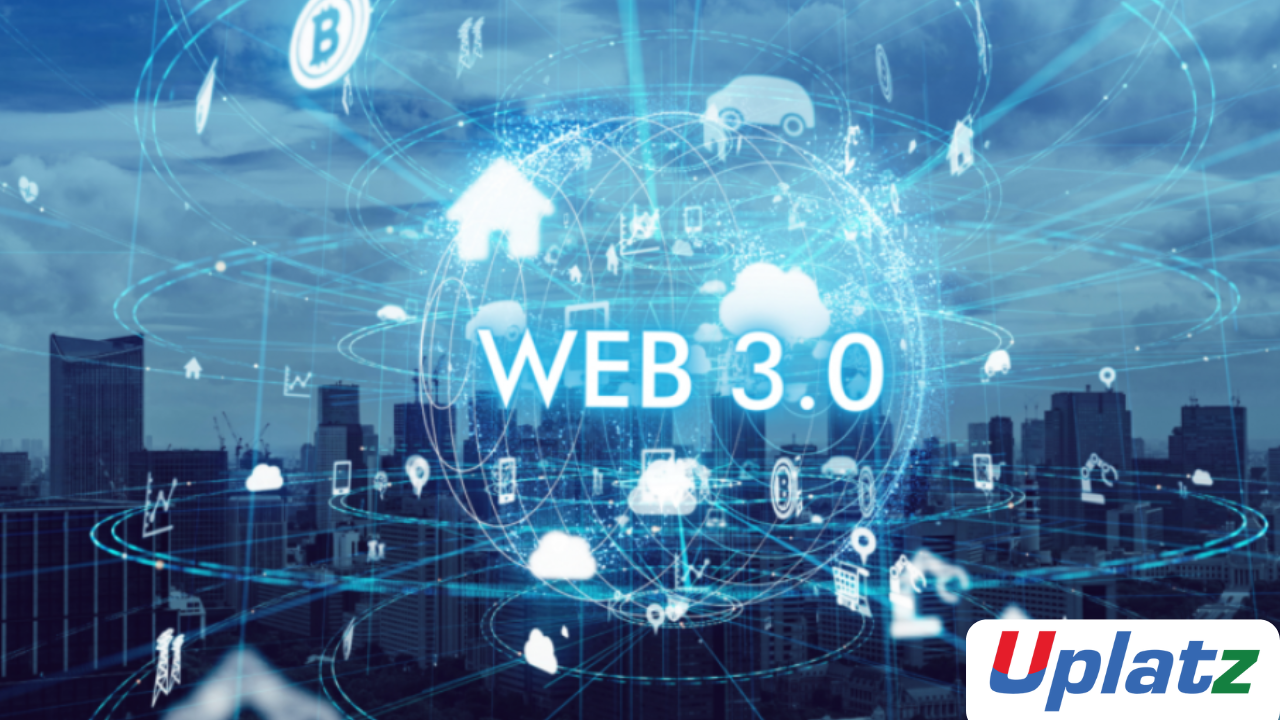Summary
As digital ecosystems mature, Web3 has emerged as a transformative movement promising to decentralize control and reimagine the internet. This report examines the current state of Web3 in 2025, assessing whether it is a lasting technological revolution or simply a speculative bubble. We analyze core Web3 technologies, real-world applications, challenges, market trends, and expert forecasts to determine whether Web3 is hype or heralds a new digital era.
Web Analytics Program By Uplatz
Introduction
Web3 represents a fundamental shift in how digital services are built, governed, and monetized. Rooted in blockchain technology, it aims to create a decentralized, user-owned internet. This report evaluates the technological, social, and economic dimensions of Web3 in 2025 to determine if its promises have evolved into real innovation or remain largely aspirational.
Core Technologies Driving Web3 in 2025
Web3 is supported by a suite of decentralized technologies that seek to reduce reliance on centralized platforms:
- Blockchain Networks: The foundational infrastructure enabling secure, transparent, and immutable recordkeeping.
- Smart Contracts: Self-executing agreements encoded on blockchain networks, enabling automation of processes without intermediaries.
- Decentralized Finance (DeFi): A financial ecosystem providing services like lending, borrowing, and trading without traditional banks.
- Non-Fungible Tokens (NFTs): Unique digital assets used for identity, certification, gaming, and ownership of intellectual property.
- Decentralized Autonomous Organizations (DAOs): Blockchain-based collectives governed by smart contracts and stakeholder consensus.
- Zero-Knowledge Proofs & Privacy Protocols: Enabling secure transactions with improved privacy and scalability.
- Layer 2 Scaling Solutions: Technologies like rollups that enhance blockchain scalability while maintaining decentralization.
- Cross-chain Interoperability: Bridges and protocols enabling interaction between different blockchain networks.
Real-World Applications and Use Cases
Despite skepticism, Web3 has seen practical deployment in several areas:
- Finance: DeFi platforms like Aave, Uniswap, and Compound enable peer-to-peer lending and trading.
- Digital Identity: Self-sovereign identity solutions allow users to control their credentials without centralized platforms.
- Supply Chain Transparency: Blockchain ensures traceability in food, pharma, and luxury goods industries.
- Gaming and Virtual Economies: Play-to-earn models and tokenized in-game assets empower users with ownership.
- Art and Entertainment: NFTs are redefining intellectual property and revenue streams for artists.
- Tokenized Communities: DAOs support community-driven governance and funding models for online groups.
Challenges and Limitations
Despite progress, Web3 faces major challenges:
- User Experience (UX): Complex interfaces and poor onboarding deter mainstream users.
- Scalability: Many blockchains struggle with transaction throughput and cost.
- Security Vulnerabilities: Smart contract bugs and bridge hacks have led to significant financial losses.
- Regulatory Uncertainty: Governments are still debating how to classify and regulate digital assets.
- Environmental Concerns: Energy-intensive proof-of-work systems, though largely replaced by proof-of-stake, continue to raise concerns.
- Speculation and Scams: Meme tokens, pump-and-dump schemes, and rug pulls erode public trust.
Market Trends and Investment Landscape
In 2025, Web3 has matured beyond the speculative frenzy of 2021–2022:
- Institutional Interest: Venture capital continues to fund infrastructure projects and decentralized apps.
- Enterprise Adoption: Corporations are exploring blockchain for supply chain, identity, and digital asset management.
- Tokenized Assets: Real-world assets (RWA) like real estate and carbon credits are being tokenized for liquidity and transparency.
- Growth in DePIN (Decentralized Physical Infrastructure Networks): Projects using tokens to incentivize infrastructure deployment (e.g., Helium, Render) are gaining traction.
Societal, Economic, and Ethical Implications
Web3 holds profound implications across various domains:
- Societal: Shifts power from centralized entities to individuals and communities, raising hopes for digital sovereignty.
- Economic: Opens new business models, monetization avenues, and value transfer mechanisms.
- Ethical: Raises concerns about data privacy, surveillance, and equitable access to digital resources.
- Digital Labor: Emerging economies are embracing Web3 micro-economies for global earning opportunities, but risk exploitation.
Expert Opinions and Forecasts
Experts remain divided:
- Supportive View: Web3 is laying the foundation for a more equitable and user-owned internet, despite current imperfections.
- Skeptical View: Critics argue the decentralization claims are overstated and many projects are VC-backed in disguise.
- Regulatory View: Policymakers urge clearer definitions and consumer protections, emphasizing anti-money laundering (AML) and Know Your Customer (KYC) compliance.
- Technological Forecast: By 2028, interoperability and privacy-preserving technologies may unlock more compelling and secure use cases.
Illustrative Examples from 2025
- DeFi Evolution: MakerDAO has integrated real-world assets into its reserves, stabilizing DeFi exposure.
- Tokenized Real Estate: Property tokens allow fractional ownership and borderless investment.
- NFT 2.0: NFTs are used for token-gated access to conferences, education, and media.
- DAOs at Scale: Developer collectives are managing multi-million-dollar treasuries for open-source software.
- AI + Web3: AI agents now use smart contracts for autonomous negotiation and execution.
Conclusion
In 2025, Web3 stands at a crossroads between promise and practicality. While it has delivered tangible innovations in finance, governance, and digital ownership, it also faces scalability, regulation, and trust challenges. Whether Web3 matures into foundational infrastructure for the next internet or recedes into niche applications will depend on solving these core issues. The answer to whether Web3 is hype or real innovation lies in its continued evolution and ability to address user needs beyond speculative gains.
References
- Buterin, V. (2023). The Three Transitions of Ethereum. https://vitalik.eth.limo/general/2023/01/02/three_transitions.html
- World Economic Forum. (2023). Decentralized Finance (DeFi): A New Architecture for the Financial World. https://www.weforum.org/reports/decentralized-finance-defi
- Andreessen Horowitz (a16z). (2024). State of Crypto Report 2024. https://a16zcrypto.com/state-of-crypto-2024
- Chainalysis. (2024). The 2024 Crypto Crime Report. https://www.chainalysis.com/reports
- Ethereum Foundation. (2025). Ethereum Roadmap & Layer 2 Development. https://ethereum.org/en/roadmap
- McKinsey & Company. (2023). The Promise and Challenges of Web3 Technologies. https://www.mckinsey.com/featured-insights
- CoinDesk Research. (2025). Web3 Adoption Metrics and Ecosystem Growth Report. https://www.coindesk.com/research
- OECD. (2024). Policy Approaches to Decentralized Finance. https://www.oecd.org/finance/defi-policy.pdf
- Electric Capital. (2024). Developer Report: Web3 Open Source Trends. https://www.developerreport.com
- Harvard Business Review. (2023). Blockchain Beyond the Hype: Real Use Cases and Strategic Insight. https://hbr.org/2023/06/blockchain-beyond-hype
